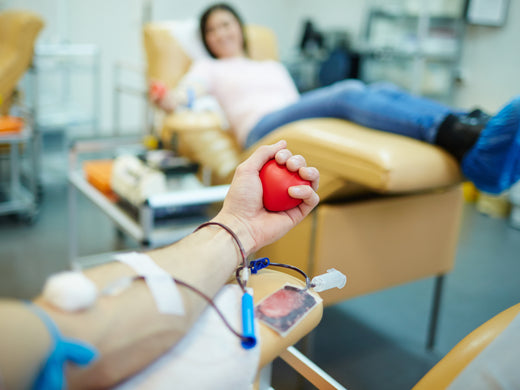Any medical diagnosis can seem scary at first, and anemia is no different. Here’s what you need to know
It’s normal to have many questions when you receive any diagnosis, including anemia, and odds are one of the top questions you have is “Is this deadly?”
The short answer when it comes to anemia: Most likely not — anemia-related deaths are very rare in first-world countries. That said, the condition could lead to more life-threatening issues if left untreated. But that’s why we’re here to give you accessible testing and information at your fingertips that you can use to empower your wellness journey.
In this piece, we’ll give you the information you need on how deadly anemia can be, how to make sure it doesn’t get any worse, and how you can use AnemoCheck to take control of your health and conquer your fears.
How Deadly Is Anemia?
Anemia can be deadly, but the death rate in the United States is low—there were 5,254 deaths linked to iron deficiency-anemia in 2019, according to the Centers for Disease Control and Prevention.
That number, though, is higher in low-income areas without accessible testing and food security (access to high-quality, nutrient-dense foods) — one 2020 study found children in low-income families were three times more likely to have iron deficiency anemia compared to children in the highest income group.
A lack of food security often leads to more cases of nutritional deficiency and malnutrition, which leads to increased iron deficiency in these areas.
But what about rarer forms of anemia, like thalassemia or sickle cell?
For thalassemia, it’s hard to tell because patients rarely die from the disease itself, but by complications brought on by it. Multiple studies point to heart disease being the leading cause of death for people diagnosed with the genetic condition, with infections and liver disease being the other top causes.
It also depends on what form of thalassemia you have—thalassemia minor, for example, typically doesn’t cause shortened lifespans and many might not have any symptoms (though they’ll still carry the gene for it, which might pose problems for their children).
Just like iron-deficiency anemia, people with better access to testing and treatment are expected to live longer lives even if they’re diagnosed with severe thalassemia—one study showed that people in India who received four years of treatment were 66 percent less likely to die from the disease.
Medical advancements, including a vaccine that protects infants from certain infections, have led to a sharp decline in sickle cell anemia death rates in children, which is great. And though the survival rate for the disease has increased, there’s still a trend of people dying from sickle cell anemia due to a lack of access to healthcare.
How Can Anemia Become More Dangerous?
When left untreated, yes, anemia can worsen over time and even lead to other long-term health issues. Again, our red blood cells carry oxygen to our major organs—when we have anemia, our organs aren’t getting enough oxygen, which can lead to complications including damage to the lungs and heart, and, in extreme cases, death.
The key word here is “untreated.” Because the symptoms can be subtle, are often confused with the signs of different medical conditions, and can come and go, there is a much higher likelihood for anemia to be missed or misdiagnosed, even by the best healthcare professionals.
If you’re experiencing any of the following symptoms, you should consult a physician as they may be a sign that your anemia could be getting worse:
- Extreme fatigue
- Weakness
- Pale or yellowish skin
- Irregular heartbeats
- Shortness of breath
- Dizziness
- Chest pain
- Constant cold hands or feet
- Headaches or migraines

How AnemoCheck can Help Your Fight Against Anemia
A healthier life starts with keeping track of what’s going on inside your body. Use it to make sure your body has the nutrients it needs to support healthy red blood cell production.
Click here to download the app via the iOS or Android app stores.





Leave a comment
This site is protected by hCaptcha and the hCaptcha Privacy Policy and Terms of Service apply.